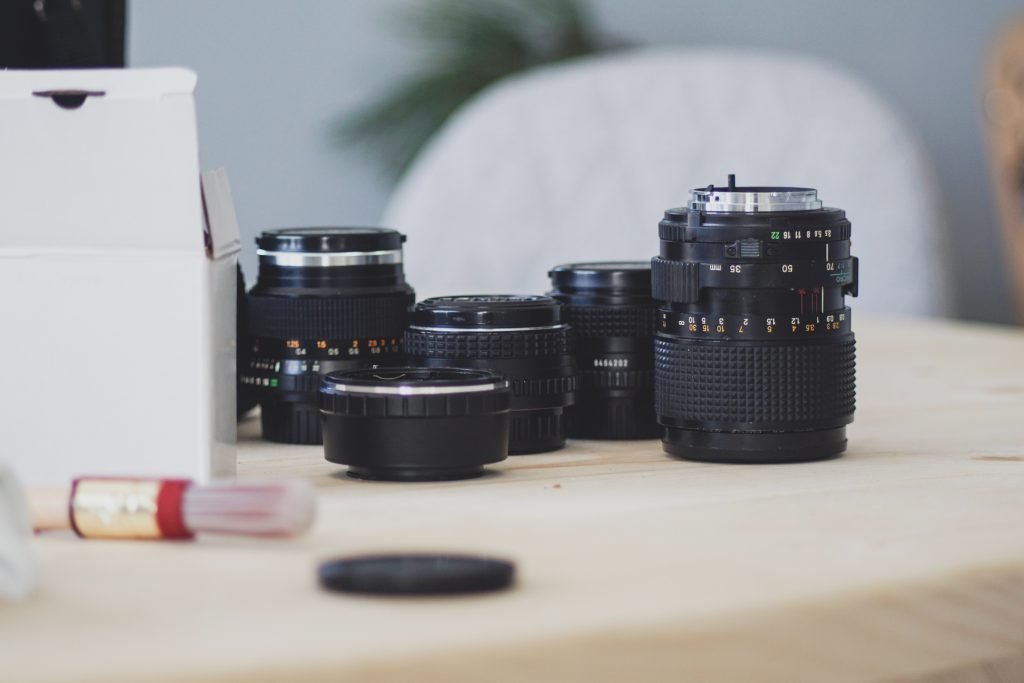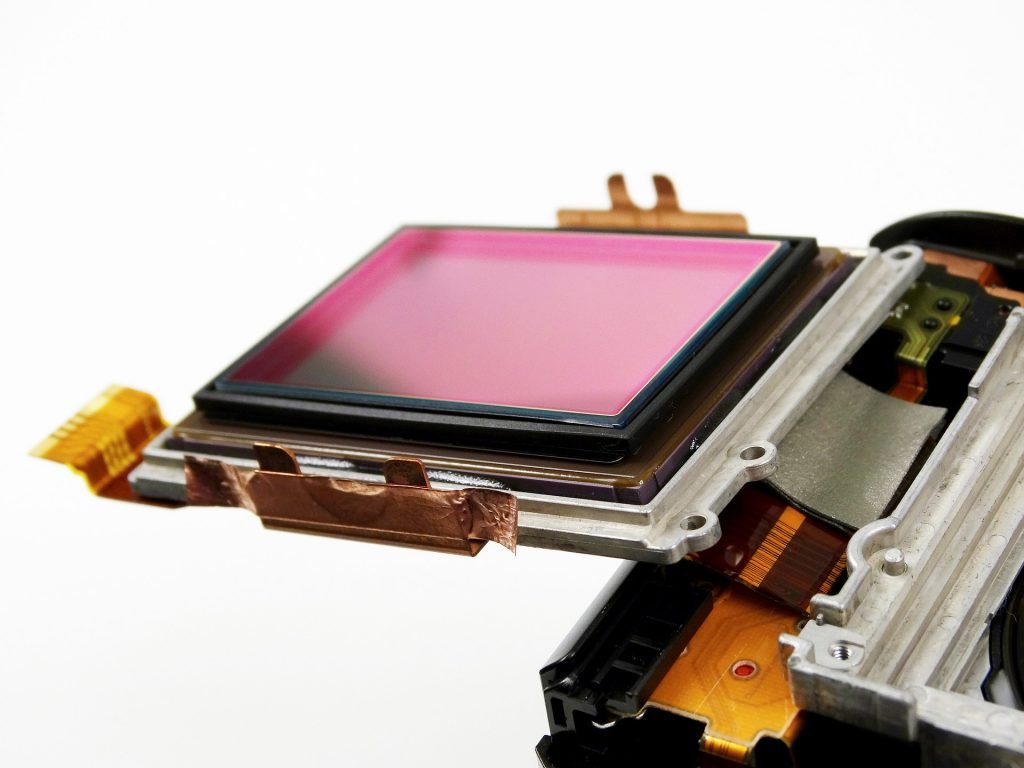Last updated on December 6th, 2023
In the world of photography, the debate between full frame vs APS-C sensors is an ongoing one. Both sensor types offer unique benefits and limitations, and this article will delve into their differences and impact on photography.

We’ll provide a comprehensive comparison, evaluating factors such as image quality, lens choices, and practical considerations to help you make an informed decision.

Understanding Sensor Sizes
To fully grasp the differences between APS-C and full-frame cameras, it’s essential to understand what these sensor sizes are and why they matter in photography.
What are APS-C and Full-Frame Sensors?
An APS-C (Advanced Photo System type-C) sensor is a smaller-sized sensor commonly found in many DSLR and mirrorless cameras. The exact dimensions of an APS-C sensor vary slightly among different camera manufacturers, but it’s generally around 22.2 x 14.8 mm.
A full-frame sensor, on the other hand, is larger, measuring 36 x 24 mm, which is the same size as a frame of 35mm film. Full-frame sensors are found in higher-end DSLR and mirrorless cameras, and they’re often considered the gold standard in terms of image quality and performance.
A Brief History of Sensor Sizes
The digital camera revolution began with sensors that were significantly smaller than 35mm film, primarily due to manufacturing limitations and cost considerations. As technology advanced and became more affordable, sensor sizes increased, and the full-frame sensor was introduced, replicating the dimensions of the traditional 35mm film format. APS-C format sensors emerged as a middle ground between the smaller, early digital sensors and the larger full-frame sensors.
The Significance of Sensor Size in Photography
Sensor size plays a crucial role in determining image quality, depth of field, low-light performance, and overall photographic capabilities. Larger sensors, like full-frame sensors, typically offer better image quality, dynamic range, and low-light performance than smaller sensors, such as APS-C sensors. However, cameras with smaller sensors are often more compact and affordable, making them attractive options for a wide range of photographers.
In the following sections, we’ll delve deeper into the differences between APS-C and full-frame cameras, examining their impact on various aspects of photography.

Comparing Full Frame vs APS-C Cameras
To better understand the differences between full frame and APS-C cameras, we’ll examine how these sensor sizes impact factors such as focal length, field of view, depth of field, and image quality.
Focal Length
Focal length, measured in millimeters, represents the distance between the camera’s sensor and the point where light converges in the lens. It determines the magnification and angle of view of a lens, which directly affects the composition of your images.
APS-C cameras have a smaller sensor size than full-frame cameras, which results in a “crop factor.” The crop factor for most APS-C cameras is around 1.5x (1.6x for Canon). This means that when using a lens on an APS-C camera, the effective focal length will be the lens’s focal length multiplied by the crop factor. For example, a 50mm lens on an APS-C camera will have an effective focal length of 75mm (50mm x 1.5).
On the other hand, full-frame cameras do not have a crop factor, so the lens’s focal length remains the same. This means that the same 50mm lens will have a true 50mm focal length on a full-frame camera.


Field of View
The field of view is the extent of the observable scene captured by the camera. It is directly influenced by the focal length and sensor size. Since APS-C sensors are smaller than full-frame sensors, they capture a narrower field of view, which is the same as using a longer focal length on a full-frame camera.
In practical terms, this means that if you use the same lens on both an APS-C and a full-frame camera, the images will appear more “zoomed in” on the APS-C camera due to the crop factor and the reduced field of view.
Depth of Field
Depth of field refers to the area of the image that appears sharp and in focus. It is influenced by several factors, including the sensor size, aperture, and focal length. Generally, larger sensors like full-frame sensors can achieve a shallower depth of field than smaller sensors like APS-C sensors, given the same focal length and aperture settings.
This is particularly important for photographers who want to create a strong separation between their subject and background, such as in portrait and wildlife photography.
Image Quality
When comparing image quality between APS-C and full-frame cameras, several factors come into play, including dynamic range, low-light performance, and overall resolution.
Full-frame sensors typically offer a higher dynamic range than APS-C sensors, which means they can capture a broader range of tonal values, from the darkest shadows to the brightest highlights. This leads to more detailed and richer images.
Additionally, full-frame cameras generally perform better in low-light conditions due to their larger sensor size, which allows for greater light-gathering capabilities and less image noise.
However, it’s essential to note that image quality is also heavily influenced by the specific camera model and technology used, and some high-end APS-C cameras can produce outstanding image quality that rivals full-frame cameras.
In the next sections, we’ll explore lens choices for APS-C and full-frame cameras and discuss the advantages and disadvantages of each sensor size.

Lens Choices for Full Frame vs APS-C Sensors
The lens choices available for full frame and APS-C cameras play a crucial role in the overall photography experience. Some lenses are designed specifically for APS-C cameras, while others are intended for full-frame use. Lenses designed for APS-C cameras generally have a smaller image circle, which is not large enough to cover a full-frame sensor, resulting in vignetting or heavy falloff in the corners when used on a full-frame camera.
Conversely, full-frame lenses can be used on APS-C cameras without any issues. However, the crop factor should be taken into account when determining the effective focal length of the lens on an APS-C body.

Advantages of APS-C Cameras and Lenses
- Cost: APS-C cameras and lenses are usually less expensive than their full-frame counterparts, making them more accessible to a wider range of photographers.
- Size and Weight: APS-C cameras and lenses are generally smaller and lighter than full-frame options, making them more portable and convenient for travel or long days of shooting.
- Reach: The crop factor of APS-C cameras effectively extends the focal length of lenses, making them ideal for wildlife and sports photography, where extra reach can be beneficial.
Advantages of Full Frame Cameras and Lenses
- Image Quality: Full-frame cameras often provide better image quality, particularly in terms of dynamic range, low-light performance, and depth of field control.
- Field of View: Full-frame cameras offer a broader field of view, which can be advantageous for landscape and architectural photography.
- Lens Compatibility: Full-frame cameras are compatible with both full-frame and APS-C lenses, providing more flexibility in lens choices.
Making a Decision: APS-C vs Full Frame?
The choice between APS-C and full-frame sensors ultimately depends on your individual photography needs, budget, and preferences. If you prioritize image quality, low-light performance, and a wider field of view, a full-frame camera may be the better option. However, if you’re looking for a more affordable and portable option with extended reach, an APS-C camera could be the right fit.
In the end, it’s essential to remember that the skill and vision of the photographer are more critical than the size of the camera sensor. Both APS-C and full-frame cameras are capable of producing stunning images when used effectively, so choose the one that best suits your requirements and enjoy the art of photography.
Upgrading from APS-C to Full Frame
If you’ve started with an APS-C camera and are considering upgrading to a full-frame system, there are a few factors to keep in mind:
- Cost: Upgrading to a full-frame camera can be a significant investment, not only for the camera body itself but also for the lenses compatible with the new system. Be prepared for higher costs when making the switch.
- Weight and Size: Full-frame cameras and lenses tend to be larger and heavier than APS-C systems. Consider whether the extra weight and bulk are worth the benefits in image quality and other features.
- Lens Compatibility: If you have invested in APS-C lenses, you may need to purchase new lenses for your full-frame system. While full-frame cameras are compatible with APS-C lenses, using them might not allow you to take full advantage of the benefits provided by a full-frame sensor.
- Learning Curve: Transitioning from an APS-C to a full-frame camera might require some time to adapt to the new system and learn how to make the most of its features.

Conclusion
When comparing full-frame vs APS-C cameras, it’s essential to consider your priorities as a photographer. Both types of cameras offer unique advantages, and understanding their differences can help you make an informed decision that meets your needs.
Keep in mind that the camera is just one part of the equation; the photographer’s skills and creativity are ultimately what create great images. Whether you shoot with an APS-C or full-frame camera, continually learning and refining your skills will help you achieve your photography goals.
Frequently Asked Questions
Is APS-C better than full frame?
It’s not a matter of one being universally better than the other; both APS-C and full-frame cameras have their own advantages and disadvantages. APS-C cameras are generally more affordable, lighter, and smaller, making them suitable for hobbyists, travel photographers, and those on a budget. Full-frame cameras, on the other hand, offer better image quality, improved low-light performance, and a wider dynamic range. The right choice depends on your individual needs, priorities, and budget.
Is it worth upgrading from APS-C to full frame?
Upgrading to a full-frame camera can be a significant investment and might not be necessary for every photographer. Before upgrading, consider factors such as cost, size, weight, and lens compatibility. It’s also important to remember that the camera is just one part of the equation; refining your photography skills and technique is essential for creating great images, regardless of the camera used.
Do professional photographers use APS-C?
Yes, many professional photographers use APS-C cameras in addition to full-frame systems. APS-C cameras offer excellent image quality and are often more compact and lightweight, making them ideal for certain situations, such as travel photography or when portability is a priority. The choice of camera ultimately depends on the specific requirements of the photographer and the type of work they are doing.


